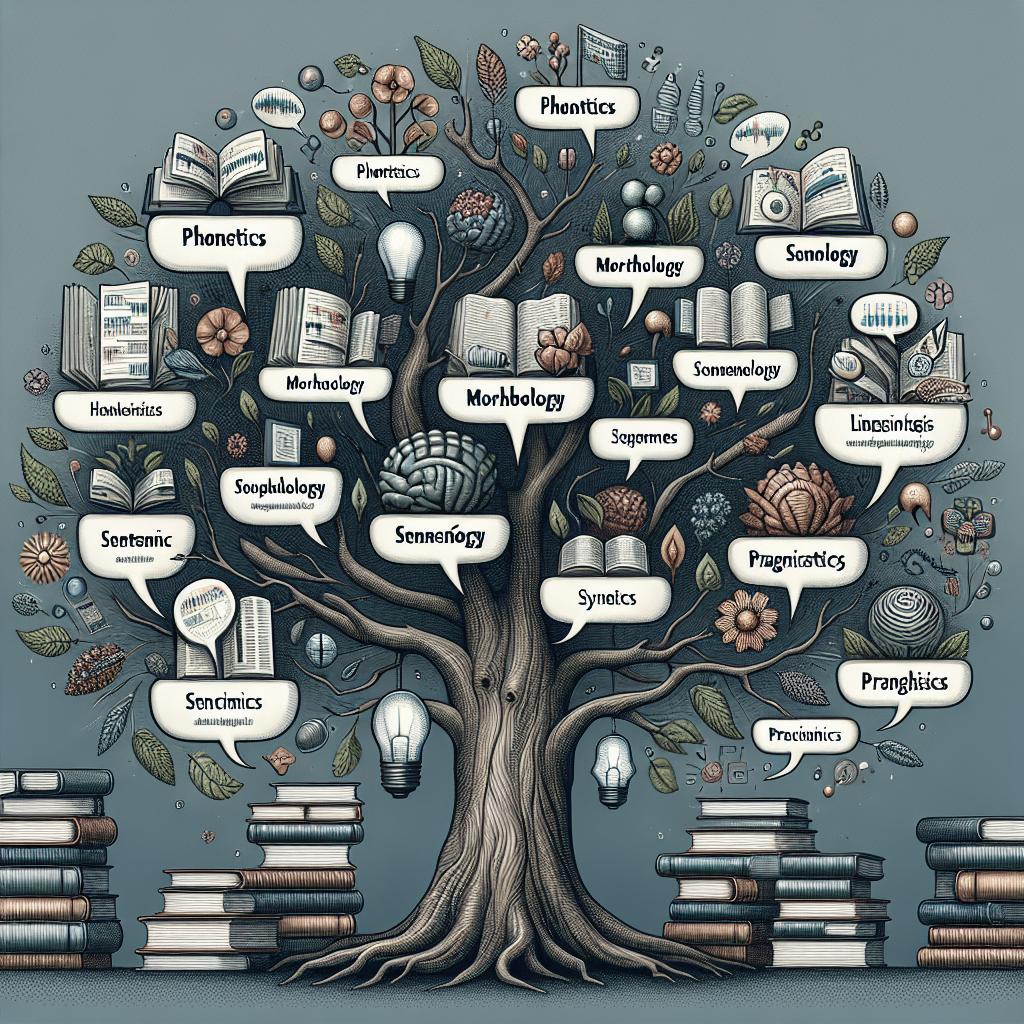<>
Understanding the Multifaceted World of Linguistics
Linguistics, the scientific study of language, is a diverse and dynamic field that encompasses various branches and sub-disciplines. These branches explore everything from the intricacies of sentence structure to the social implications of language use. This blog post delves into the key questions linguists seek to answer, the extensive research that drives the discipline forward, and a detailed examination of the primary branches of linguistics, concluding with an overview of how linguistics impacts various aspects of society on a global scale.
Key Questions
Linguists strive to answer fundamental questions about the nature of language. For instance, they investigate what constitutes a language and how languages differ from one another. This includes exploring the elements that make up a language, such as sounds, words, and sentences, and understanding the rules that govern their use. Another vital question is the origin of language in humans. Researchers are keen to uncover how language evolved and its role in the development of human societies. They study the biological, cognitive, and social aspects of language acquisition in both children and adults to gain insights into this evolutionary marvel. Moreover, linguists want to understand how language changes over time. This involves examining the historical shifts in languages, the influence of cultural exchanges, and the mechanisms behind language variations and dialects. These inquiries help elucidate why languages evolve and how they can diverge into entirely new languages.
Research in Linguistics
Research in linguistics is a multi-faceted endeavor that employs various methodologies to gather and analyze data. Fieldwork is one of the primary methods used, wherein linguists immerse themselves in a community to record and analyze the spoken language. This hands-on approach is crucial for studying endangered languages and undocumented linguistic phenomena. Another essential research method is experimental linguistics, which involves controlled experiments to test hypotheses about language processing and acquisition. Techniques such as brain imaging and eye-tracking provide insights into the cognitive aspects of linguistic processing, helping researchers understand how we produce and comprehend language. Furthermore, computational linguistics leverages computer algorithms to analyze large datasets of linguistic corpora. This field intersects with artificial intelligence and machine learning, offering tools for natural language processing, automated translation, and speech recognition. Computational approaches allow linguists to handle the vast complexity of language data and uncover patterns that might be missed with traditional methods.
List of Branches of Linguistics:
Linguistics is divided into several branches, each focusing on different aspects of language. Here, we provide an overview of the primary branches: 1. Phonetics and Phonology : Phonetics deals with the physical sounds of speech, examining how they are produced and perceived. Phonology, on the other hand, studies how sounds function within a particular language or languages, encompassing the rules that dictate sound patterns. 2. Morphology : This branch focuses on the structure of words. Morphologists study the formation and composition of words, including roots, prefixes, and suffixes, and how these elements interact to convey meaning. 3. Syntax : Syntax explores the structure of sentences. Syntacticians analyze the rules and principles that govern sentence formation, studying how words combine to form grammatically correct and meaningful sentences. 4. Semantics and Pragmatics : Semantics is concerned with meaning in language, diving into how words and sentences convey meaning. Pragmatics, on the other hand, examines how context influences the interpretation of meaning, encompassing the study of language in use and the various factors that impact comprehension in real-life communication. 5. Sociolinguistics : This branch investigates the relationship between language and society. Sociolinguists explore how language varies across different social groups and contexts, examining factors like ethnicity, gender, age, and socio-economic status. 6. Psycholinguistics : Psycholinguistics merges psychology and linguistics to study how language is processed in the brain. Researchers in this field analyze language acquisition, comprehension, production, and the cognitive mechanisms behind these processes. 7. Historical Linguistics : This field looks at how languages change over time. Historical linguists trace the evolution of languages, study language families, and reconstruct ancient languages to understand how our modern languages have developed. 8. Applied Linguistics : Applied linguistics focuses on practical applications of linguistic knowledge. This includes language teaching, language policy, translation, and communication disorders. It seeks to apply theoretical linguistic insights to solve real-world language problems.
A Global Reputation
Linguistics has a significant impact on various global issues. For instance, in the realm of technology, advancements in computational linguistics have revolutionized areas such as automated translation, voice recognition software, and text-to-speech systems. These innovations not only facilitate global communication but also bridge language barriers in unprecedented ways. Moreover, the preservation of endangered languages is a critical endeavor within linguistics that has global implications. By documenting and revitalizing these languages, linguists help maintain cultural heritage and linguistic diversity, which are vital components of our global collective identity. This work ensures that the knowledge embedded in these languages is not lost to future generations. Finally, the application of sociolinguistics in understanding language policies and planning has profound implications for education, governance, and social integration. By fostering inclusive language policies, societies can address issues related to multilingualism and language rights, promoting social harmony and equitable access to information and resources.
Final Thoughts
The field of linguistics is vast and multifaceted, encompassing various branches that delve into different aspects of language. From the physical properties of speech sounds to the cognitive processes behind language use, each branch offers unique insights that enhance our understanding of one of humanity’s most fundamental attributes. Here is a summary of the key branches of linguistics:
| Branch | Focus Area | Description |
|---|---|---|
| Phonetics and Phonology | Sounds | Studies the production and function of speech sounds. |
| Morphology | Word Structure | Examines the formation and composition of words. |
| Syntax | Sentence Structure | Analyzes the rules and principles of sentence formation. |
| Semantics and Pragmatics | Meaning | Explores meaning in language and how context affects interpretation. |
| Sociolinguistics | Language and Society | Investigates the relationship between language and social factors. |
| Psycholinguistics | Language and Mind | Studies language processing in the brain. |
| Historical Linguistics | Language Change | Traces the evolution and development of languages over time. |
| Applied Linguistics | Practical Applications | Focuses on solving real-world language problems. |
Linguistics not only enriches our understanding of language but also advances various fields, from technology to cultural preservation, demonstrating its global relevance and impact.


